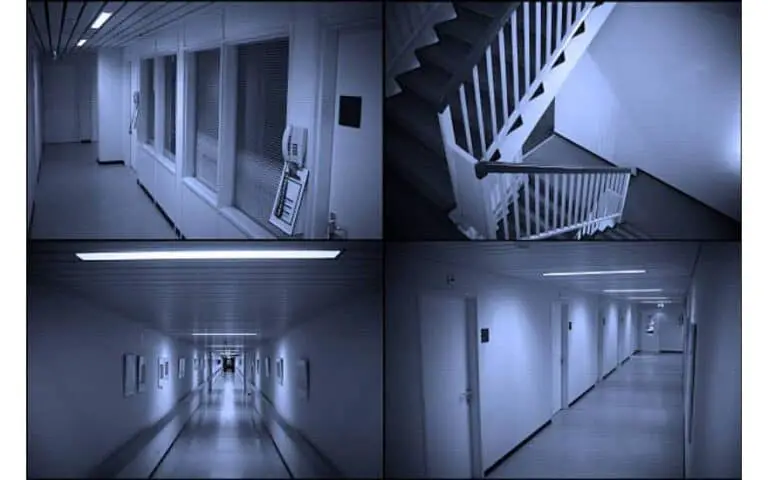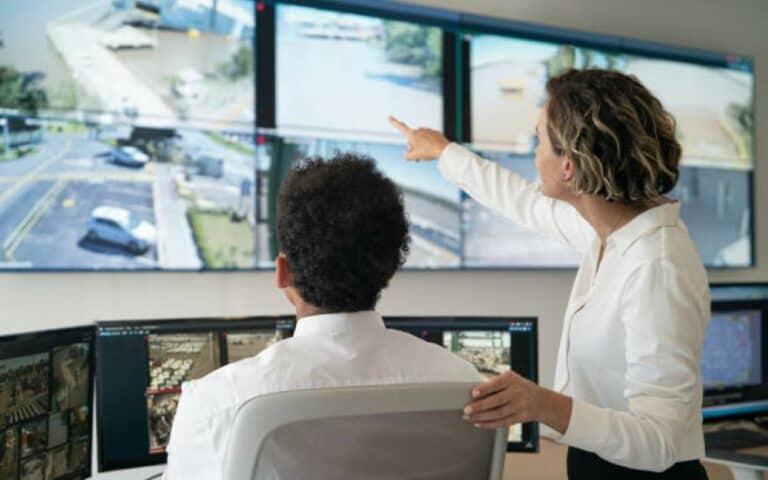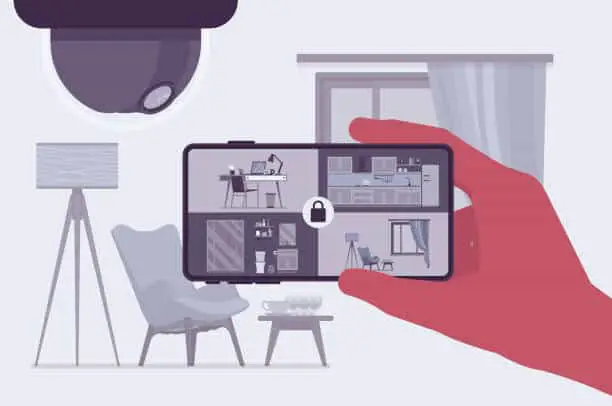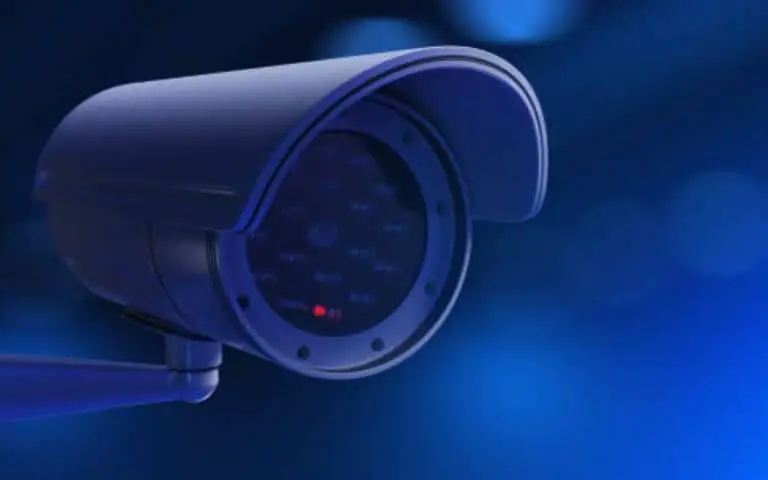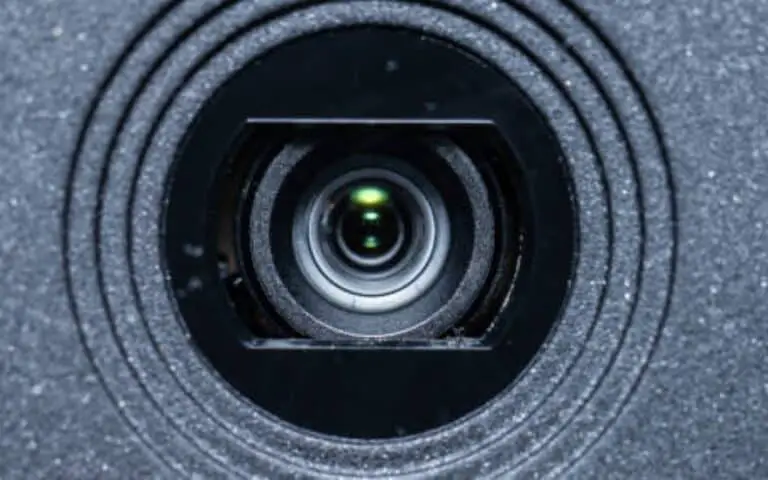Wired security cameras are an excellent way to ensure the safety of your home or workplace. These cameras are a great option for those who want a reliable surveillance system that is easy to install and monitor. However, if you are new to installing wired security cameras, it can be a daunting task. How do you choose the right camera? How do you install it correctly? In this blog, I will guide you through the process of installing wired security cameras step-by-step. By the end of this article, you’ll be well-equipped to install your own wired security cameras and enjoy the peace of mind that comes with a secure home or workplace.
How to install wired security cameras: 15 Steps
Installing wired security cameras can be a bit more complicated than installing Wi-Fi cameras, but the end result is definitely worth it. Here’s my personal guide on how to install a wired system based on my experience using an EZVIZ 1080p system with a DVR.
1. Determine the ideal camera placement
Determining the ideal placement for a security camera is crucial to ensuring maximum coverage and optimal home security. It is important to consider the most vulnerable entry points such as ground-floor doors and windows, hallway or stairway leading up, common areas, driveways, and front and backyards.
Placing cameras in bedrooms and bathrooms is not recommended for privacy reasons but securing a main second-floor hallway with an indoor camera is a great way to provide more video evidence if involved in a criminal investigation. It is also important to avoid placing cameras on a neighbor’s property and in bathrooms. The debate on whether to keep cameras visible or hidden is ongoing, but you need to decide yourself how conspicuous you want your cameras to be. Proper camera placement can make a significant difference in detecting and deterring burglars and securing your home. [3][4]
2. Choose the right cameras and accessories
When it comes to installing a wired security camera system, it’s important to choose the right cameras and accessories for your specific needs. Consider the resolution and field of view of the cameras, as well as any additional features such as motion detection or night vision.
You’ll also need to decide whether you want to use analog cameras with baluns for digital connectivity or if you prefer the simplicity of using Ethernet cables. Additionally, make sure you have all the necessary tools such as a power drill, steel fish tape, and masking tape to make the installation process easier. By choosing the right cameras and accessories, you’ll be able to create a reliable and effective security system for your home or business. [5][6]
3. Map out the wiring route
When you’re installing wired security cameras, you need to have a plan for how the wiring will run from the cameras to the DVR or NVR. This route should be mapped out before you drill any holes or feed cables through walls. You’ll want to take into account any obstacles in the way, such as studs or pipes, and determine the best path for the wiring.
In some cases, you may need to use a fish tape or rod to guide the wiring through tight spaces. It’s important to ensure that the wiring is properly secured and protected from damage, using cable clips or a staple gun as needed. Taking the time to plan out your wiring route can save you time and frustration later on in the installation process. [7][8]
4. Drill necessary holes
To install wired security cameras, it is important to drill necessary holes in the walls. This step is essential as it allows the cables to be fed through the walls and connected to the cameras. The holes should be drilled at a height that gives a clear view of the area being monitored. The size of the holes should be such that the cables can be easily passed through them. Care should be taken while drilling the holes to avoid damaging any electrical wires or pipes that may be present in the walls.
It is recommended to use a stud finder to locate the wall studs and avoid drilling into them. The placement of the holes should be calculated beforehand to ensure that the cables reach from the cameras to the power supply and DVR or NVR. By drilling the necessary holes, the security cameras can be securely installed and provide effective surveillance of the area.
5. Feed cables through the walls
When installing wired security cameras, it is important to feed the cables through the walls properly. This step should be done carefully to avoid damaging the walls or the wires. First, determine the proper location for the cameras and decide where to drill the holes for the cables. After drilling the holes, use a fish tape or a wire snake to guide the cables through the walls.
Make sure to leave enough slack in the cables for proper connection and to provide room for any future adjustments. It is important to use protective conduit or cable covers to avoid any damage to the cables. Once the cables are fed through the walls, they can be connected to the power supply and the DVR or NVR for proper configuration. By following these steps and taking precautions, the installation of wired security cameras can be done effectively and efficiently. [11][12]
6. Connect the cameras to the power supply
Connecting the cameras to the power supply is an essential step in installing wired security cameras. This step requires the homeowner to identify the location of the power outlet and reach it with the camera’s power cable. It is essential to have a power outlet available near the camera’s location, or the homeowner may need to install a new power socket.
The homeowner must ensure that the power supply is off before beginning to connect the wires to avoid any electrical hazards. Once the power supply is off, the homeowner can connect the wires to the camera and the power outlet. The plug of the power cable goes into the power source, while the other end connects to the camera’s power input. It is essential to ensure that the cable is secure, as any loose connection can result in the camera not receiving power and not functioning correctly. [13][14]
7. Connect the cameras to the DVR or NVR
Once you have figured out where you want your wired security cameras installed and prepared for the installation, the next step is to connect the cameras to the DVR or NVR. This is the heart of your security system where all the video footage will be recorded and stored. For analog camera systems, you can use BNC cables to connect the cameras to the DVR, but it is recommended to use baluns to convert analog to digital and use Ethernet cables instead.
Digital systems use Ethernet cables directly for camera connections. Once everything is plugged in, ensure that all the cameras are being detected by the DVR or NVR. Follow the manufacturer’s guidelines for configuring the cameras using their software. This may include setting the recording quality, motion detection, and scheduling.
It is important to secure this connection and protect your system from unauthorized access. Connect the DVR or NVR to a power outlet, and for monitoring, attach a monitor to view live feeds and past recordings. [15][16]
8. Configure the cameras using the manufacturer’s software
Once the security cameras are installed and wired, it’s essential to configure them using the manufacturer’s software. This software allows users to customize the settings of the cameras and access the recorded footage from a remote device. Users can adjust settings such as resolution, frame rate, and motion detection sensitivity according to their specific security needs.
The software also enables users to set up notifications and alerts for suspicious activity detected by the cameras. Additionally, users can manage the video storage and playback options from the software interface. It is crucial to follow the manufacturer’s instructions while configuring the cameras to ensure optimal performance.
Regular software updates should also be installed to ensure any bugs are fixed, and the cameras remain up-to-date with the latest features and security patches. Overall, configuring the cameras using the manufacturer’s software is an important step to manage and operate your security camera system effectively. [17][18]
9. Set up remote viewing via a computer or smartphone
After installing wired security cameras, the next step is to set up remote viewing via a computer or smartphone. This feature enables users to access the security footage from anywhere in the world as long as they have an internet connection. To set it up, users need to connect the CCTV system to their home or business network and configure port forwarding to allow internet access.
They can then use a computer web browser or smartphone app to access the security footage with ease. Most CCTV systems come with proprietary software for remote viewing, and users can also opt for a third-party app if they prefer. With remote viewing, users can monitor their property in real-time and receive alerts if any suspicious activity is detected. It is an essential feature for anyone who wants to keep an eye on their property from afar. [19][20]
10. Test the system
After installing the wired security cameras, it is important to test the system to ensure all the cameras are working properly. This involves checking if there are any blind spots or areas that need to be repositioned for better surveillance. The user interface should also be tested to ensure it is working as expected. If there are any issues, it is important to troubleshoot them before considering the system good to go.
Tidying up the wiring is also important after installation to ensure that all the cables are neatly arranged and free from any obstructions that may cause tripping hazards. A routine maintenance plan should be set up to ensure the cameras are in good working condition at all times. In some instances, advanced installation techniques may be necessary for larger systems. It’s important to remember that hiring a professional installation team may be the best way to ensure a reliable and efficient system. [21][22]
11. Tidy up the wiring
After successfully installing a wired security camera system, it’s important to tidy up the wiring to ensure a clean and polished finish. The cables and wires can be quite an eyesore if left unkempt, so it’s best to organize them neatly. A cable management system can be used to bundle and hide the cables, making them look tidy and professional.
Labeling the cables is also important to avoid confusion later on. It’s a good idea to use cable ties or clips to keep the cables in place. Additionally, it’s important to avoid overstretching the cables when installing the cameras as this can cause damage and affect the quality of the footage. Taking the time to tidy up the wiring can make a significant difference in the overall appearance of the security system. [23][24]
12. Set up a routine maintenance plan
Once security cameras are installed, it’s important to set up a routine maintenance plan to ensure they continue to operate efficiently. Regular cleaning and checking for any physical damage or signs of wear and tear is a good start. In addition, maintaining proper power supply, wiring, and ensuring software updates are all crucial to keep cameras functioning at their best. These routine checks can help avoid costly repairs or replacement in the future and ensure uninterrupted video surveillance.
Scheduling these maintenance tasks at regular intervals, such as monthly or quarterly, can help keep the system operating smoothly and alert authorities to any suspicious activity that may be caught on camera. By following a regular maintenance plan, residents or business owners can have peace of mind knowing they are doing their part to ensure maximum security and protection for their assets. [25][26]
13. Troubleshooting common installation issues
Installing wired security cameras can be a great investment for your home’s safety. However, there may be some challenges during the installation process. Common issues that homeowners experience include cables being too short, cameras not displaying clear video, and difficulty with connecting the cameras to the recording device. When going through the installation process, it’s important to be mindful of these issues and address them promptly.
It might be helpful to have a friend assist you in feeding the cables through holes and labeling which camera corresponds with which feed. Additionally, make sure each camera is securely connected to both the power source and the recorder. If you experience any issues, don’t hesitate to contact a professional installation team for help. Resolving these common issues will ensure that your wired security system functions properly and effectively protects your home. [27][28]
14. Advanced installation techniques for larger systems
For larger security systems, there are advanced installation techniques that can help ensure maximum coverage and security. One technique is to use multiple recorders to split the workload and avoid overwhelming a single device. This can also aid in easier access and reviewing of footage. Another tip is to use a PoE switch to manage power and data transmission for multiple cameras.
It’s also important to consider the placement of cameras, using a combination of bullet and dome cameras to cover different angles and areas. For outdoor cameras, weather shields can help protect against damage and maintain clear footage. Finally, for a truly comprehensive system, combining wired cameras with smart technology such as motion sensors and door locks can provide even more peace of mind. Advanced installation techniques may require professional help, but can offer a reliable and efficient security solution. [29][30]
15. Hiring a professional installation team
If you’re considering a wired security camera system for your home, it’s important to know that installation can be tricky if you’re doing it yourself. While some people may feel confident installing cameras on their own, hiring a professional installation team is always a smart idea. Not only do they have the experience and knowledge to ensure proper installation, but they can also properly assess any vulnerabilities in your system and recommend the best features for your needs.
When it comes to the cost, it can be a worthwhile investment since the average cost to install a single wired camera is between $150 and $200. By enlisting a professional, you can have peace of mind knowing that your security system is installed correctly, protecting your home and loved ones. [31][32]
Summary
Hey there, if you’re thinking of getting a wired security camera system, I’ve got you covered. Here’s a quick summary of what you’ll need and how to install it. Basically, every system consists of cameras and a DVR box that records everything. You’ll need Ethernet cable and baluns (converts analog to digital), a power drill with drive bits, masking tape, a monitor, a mouse and keyboard, and a friend to help out.
When it comes to installing wired security cameras, you need to think about the best place to mount them. Make sure to mark where the camera’s cable will feed through and prepare for the installation by getting the right tools. You’ll need structured cabling to connect the camera to the server or NVR, and an NVR to record video footage. Lastly, you’ll need hard drives to store the footage. There you have it, now you’re ready to install a wired security camera system! [33][34]

